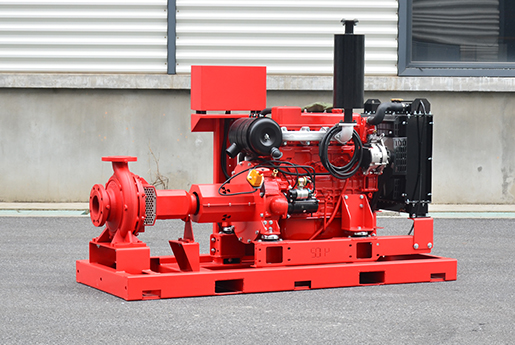How do advancements in technology impact the design and operation of fire pump systems?
Apr 16, 2024
Share:
Advancements in technology have a significant impact on the design and operation of fire pump systems, offering improvements in efficiency, reliability, and safety. Here are some ways technology influences these aspects:
1. **Smart Monitoring and Control Systems**: Modern fire pump systems often incorporate smart monitoring and control systems that allow for remote monitoring and management. These systems can provide real-time data on pump performance, status, and potential issues, allowing for proactive maintenance and troubleshooting.
2. **Variable Speed Drives (VSD)**: VSD technology allows fire pump systems to vary the speed of the pump motor based on demand, resulting in energy savings and more precise control of water flow and pressure. This enhances the efficiency of the system while ensuring that water is delivered at the required rate during firefighting operations.
3. **Advanced Sensors and Detectors**: Technological advancements have led to the development of more sensitive and reliable sensors and detectors for fire detection and suppression. These sensors can detect fires at an early stage, triggering the fire pump system to activate automatically and mitigate the spread of the fire.
4. **Integration with Building Management Systems (BMS)**: Fire pump systems can now be integrated with BMS, allowing for seamless coordination with other building systems such as HVAC, lighting, and access control. This integration enables more efficient operation and centralized monitoring of critical building functions.
5. **Remote Diagnostics and Maintenance**: Remote diagnostic tools enable technicians to identify and troubleshoot issues with fire pump systems without needing to be physically present on-site. This can lead to faster response times and reduced downtime, ensuring that the system remains operational when needed.
6. **Improved Fire Suppression Techniques**: Advancements in fire suppression technology, such as the development of new extinguishing agents and delivery systems, can impact the design of fire pump systems. These systems may need to be adapted to accommodate new suppression techniques while ensuring compatibility with existing infrastructure.
Overall, advancements in technology enable fire pump systems to be more efficient, reliable, and effective in protecting life and property from the threat of fire. By leveraging these technologies, designers and operators can enhance the performance and capabilities of fire pump systems in various applications.

1. **Smart Monitoring and Control Systems**: Modern fire pump systems often incorporate smart monitoring and control systems that allow for remote monitoring and management. These systems can provide real-time data on pump performance, status, and potential issues, allowing for proactive maintenance and troubleshooting.
2. **Variable Speed Drives (VSD)**: VSD technology allows fire pump systems to vary the speed of the pump motor based on demand, resulting in energy savings and more precise control of water flow and pressure. This enhances the efficiency of the system while ensuring that water is delivered at the required rate during firefighting operations.
3. **Advanced Sensors and Detectors**: Technological advancements have led to the development of more sensitive and reliable sensors and detectors for fire detection and suppression. These sensors can detect fires at an early stage, triggering the fire pump system to activate automatically and mitigate the spread of the fire.
4. **Integration with Building Management Systems (BMS)**: Fire pump systems can now be integrated with BMS, allowing for seamless coordination with other building systems such as HVAC, lighting, and access control. This integration enables more efficient operation and centralized monitoring of critical building functions.
5. **Remote Diagnostics and Maintenance**: Remote diagnostic tools enable technicians to identify and troubleshoot issues with fire pump systems without needing to be physically present on-site. This can lead to faster response times and reduced downtime, ensuring that the system remains operational when needed.
6. **Improved Fire Suppression Techniques**: Advancements in fire suppression technology, such as the development of new extinguishing agents and delivery systems, can impact the design of fire pump systems. These systems may need to be adapted to accommodate new suppression techniques while ensuring compatibility with existing infrastructure.
Overall, advancements in technology enable fire pump systems to be more efficient, reliable, and effective in protecting life and property from the threat of fire. By leveraging these technologies, designers and operators can enhance the performance and capabilities of fire pump systems in various applications.


.png)
.png)

.png)


